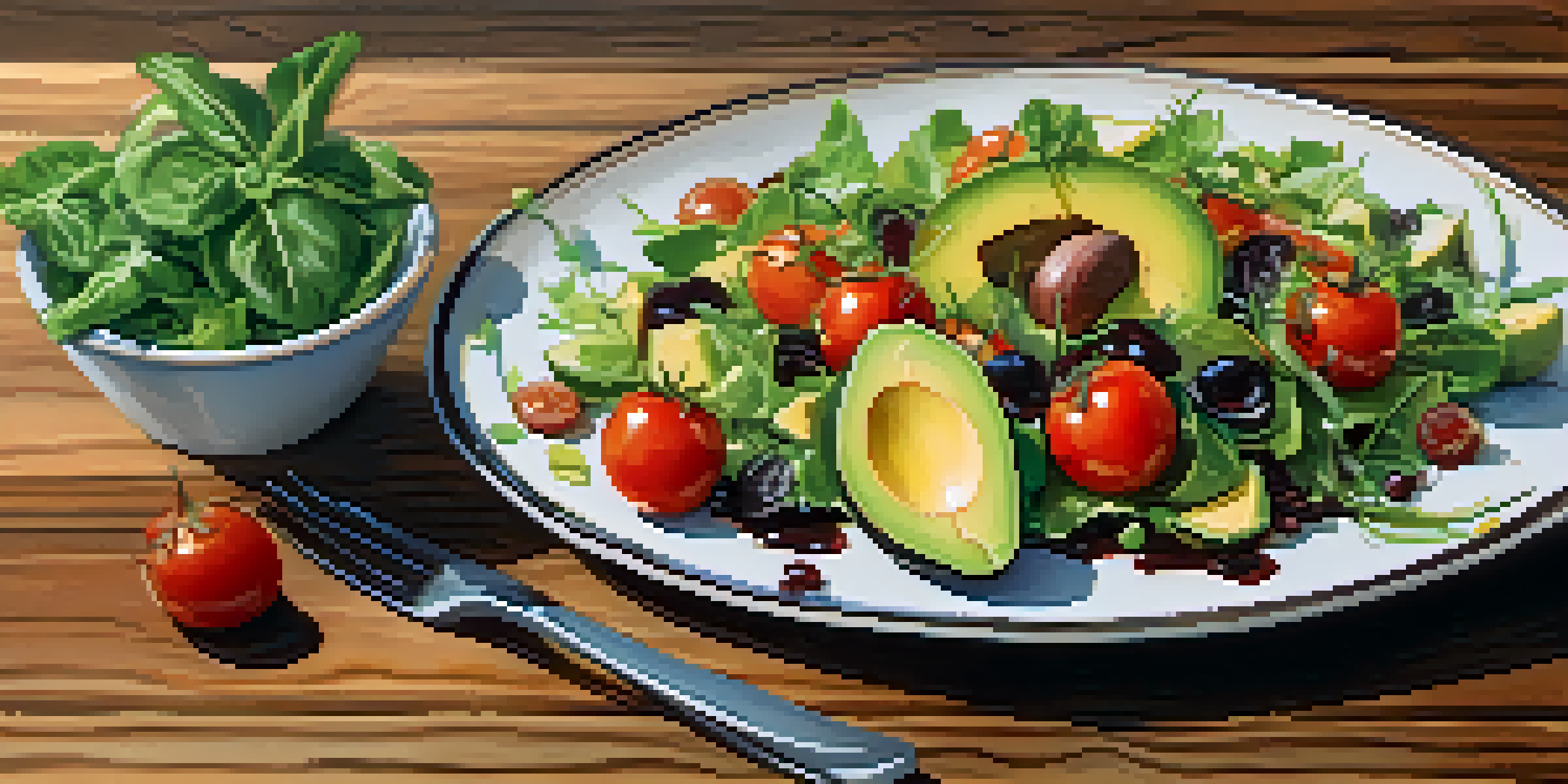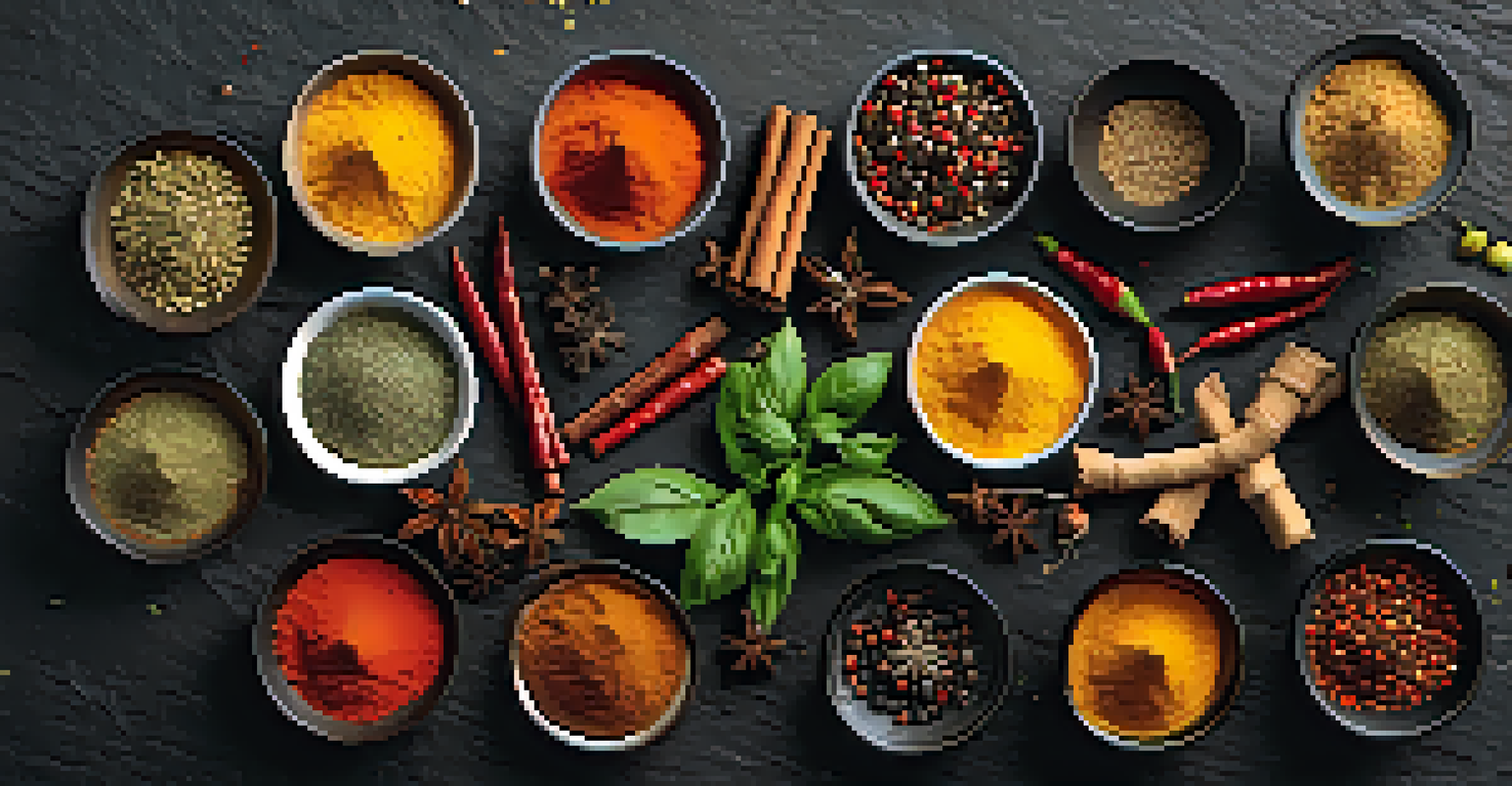Decoding Food Pairing: Science Behind Gourmet Flavors

Understanding the Basics of Food Pairing
Food pairing is all about combining ingredients that enhance each other's flavors. Think of it as a dance where each ingredient brings its unique rhythm to the table. When paired correctly, these ingredients create a harmonious balance that elevates the dish.
Cooking is like love. It should be entered into with abandon or not at all.
The science behind food pairing is rooted in chemistry, where compounds in different foods interact to create new flavors. This is why strawberries and balsamic vinegar work so well together; they share similar flavor compounds that amplify each other. It’s a bit like finding the perfect duet in music.
Ultimately, understanding the basics of food pairing opens up a world of culinary possibilities. It allows chefs and home cooks alike to experiment and discover unique combinations that tantalize the taste buds and elevate everyday meals.
The Role of Aroma in Flavor Pairing
Did you know that our sense of smell plays a crucial role in how we perceive flavor? In fact, aroma accounts for a large part of what we taste. When food is cooked, its aroma compounds are released, influencing our overall eating experience.

This is why pairing ingredients with complementary aromas can enhance a dish significantly. For example, the earthy scent of mushrooms pairs beautifully with the fresh notes of thyme. Together, they create a multi-dimensional flavor profile that excites the palate.
Food Pairing Enhances Flavor
Combining ingredients that complement each other creates a harmonious balance, elevating the overall dish.
Exploring how different aromas interact can lead to unexpected yet delightful pairings. By paying attention to the scents of your ingredients, you can create dishes that are not only delicious but also memorable.
Exploring the Flavor Wheel: A Useful Tool
The flavor wheel is a handy tool for anyone looking to master food pairing. It categorizes flavors into different sections, making it easier to identify which ingredients complement one another. Think of it as a map guiding you through the culinary landscape.
Good food is the foundation of genuine happiness.
For instance, if you look at the wheel and see citrus, you might find that it pairs well with herbs like basil or spices like cumin. This visual aid helps demystify the process of pairing flavors, making it accessible even to novice cooks.
Using the flavor wheel can also spark creativity in the kitchen. When you understand how flavors relate, you're more likely to try new combinations and push the boundaries of traditional cooking.
The Science of Taste Buds and Flavor Perception
Our taste buds are fascinating little receptors that help us experience flavor. They can detect five basic tastes: sweet, sour, salty, bitter, and umami. Each of these tastes plays a role in how we perceive a dish's overall flavor profile.
Understanding how these tastes interact can guide you in creating well-balanced meals. For instance, adding a touch of salt can enhance sweetness, while a splash of acidity can brighten up a rich, creamy sauce. It's all about finding that perfect balance.
Aroma Shapes Our Taste Experience
Our sense of smell significantly influences flavor perception, making aroma a key factor in successful pairings.
By experimenting with different taste combinations, you can create complex dishes that keep diners guessing. This exploration of flavor perception is what makes cooking both an art and a science.
Cultural Influences on Food Pairing Practices
Food pairing practices often reflect cultural traditions and preferences. Different cuisines have unique ways of combining flavors that have been honed over centuries. For example, the use of spices in Indian cooking creates a rich tapestry of flavors that is distinctly different from the fresh herbs found in Mediterranean dishes.
Exploring these cultural influences can deepen your appreciation for global cuisines. Understanding why certain flavors are paired together can help you recreate authentic dishes and also inspire new, fusion creations.
By embracing cultural influences, you can expand your culinary repertoire and discover delightful flavor combinations that may have never crossed your mind before.
Experimenting with Unconventional Pairings
Sometimes, the most exciting flavors come from unexpected pairings. Think of sweet and savory combinations, like bacon-wrapped dates or chocolate-covered pretzels. These contrasts create a delightful tension in flavors that can surprise and delight.
The key to successful unconventional pairings lies in balancing the elements. If one ingredient is particularly strong, like blue cheese, pairing it with something mild, like pears, can create a beautiful symphony of flavors without overwhelming the palate.
Cultural Influences in Flavor Pairing
Different cuisines reflect unique pairing traditions that can inspire creativity and broaden culinary horizons.
Don’t be afraid to experiment! The kitchen is a playground where you can try new combinations. Some of the best discoveries in food pairing come from a bit of daring and a willingness to think outside the box.
Using Technology to Enhance Flavor Pairing
In today's digital age, technology is revolutionizing how we approach food pairing. Various apps and websites analyze flavor compounds, suggesting combinations based on scientific data. This makes it easier for both chefs and home cooks to explore new flavor territories.
For example, some tools allow you to input an ingredient and generate a list of complementary flavors, saving you time and sparking creativity. Imagine having a virtual sous-chef that helps you discover the perfect pairing for that ripe avocado sitting on your kitchen counter.

As technology continues to evolve, it holds the potential to transform our culinary experiences. Embracing these innovations can enhance your cooking and make the process of discovering new flavors even more enjoyable.